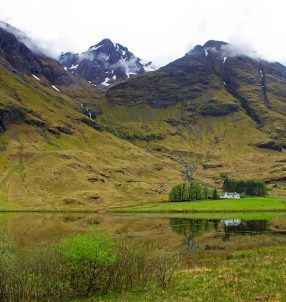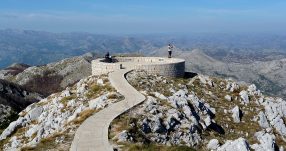Thrills and spills are the raison d’être of white water rafting. So, just what is it about this sport where falling into rocky, fast-moving water is kind of the point??? Well, white water rafting is one of the most epic water sports and is definitely classified as an extreme sport. Read this and you’ll find out why!
Photo By: Gareth Owens
What is White Water Rafting
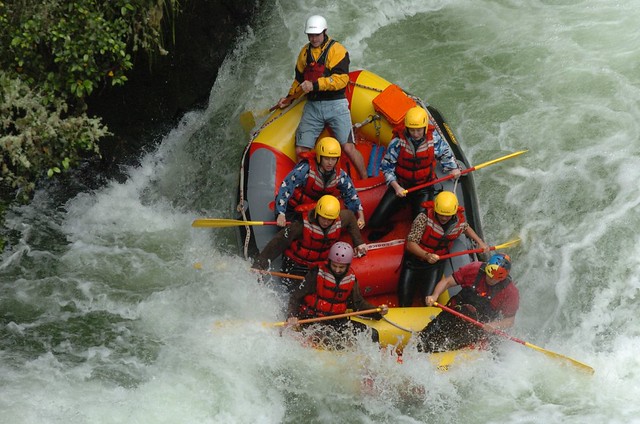
Photo By: Antoine Hubert
So, rafting involves an inflatable plastic boat – or raft – and oars on any kind of body of water – rivers, lakes, the sea, or even the ocean. But, white water rafting involves using this raft to head down ‘rough’ water that is fast-moving, often rocky, and sometimes steep. There are classifications used to classify the water based on difficulty level. The classification goes from Grade I to Grade VI, with VI being the most difficult and considered unrunable by some. Grade VI rapids are very dangerous and include whitewater, waves, rocks and drops. Grade VI is not for beginners – in fact, many Grade VI rapids are considered so dangerous that injury or death is a possibility. Plus, the equipment needed for rafting (like the raft and oar) are not necessarily made to survive Grade VI rapids, so you should always check your equipment is sturdy enough. For an experienced white water rafter, Grade V is considered the most difficult to reasonably expect to be able to complete in one piece.
What You Need to Go White Water Rafting
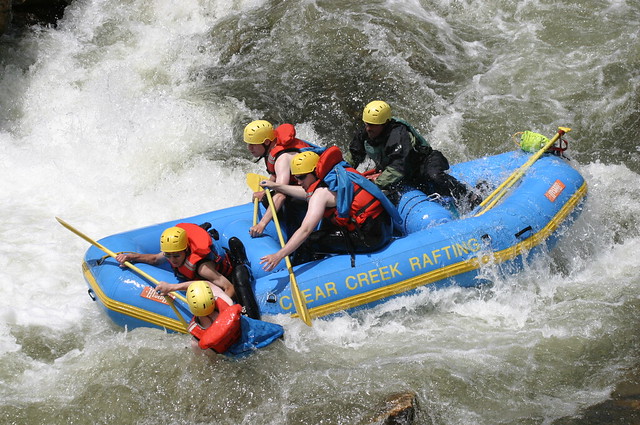
Photo By: Chris Bartle
Usually, 4-8 people are needed for a white water rafting session, and you’re usually led by a guide who knows the area well. Plus, you’ll also need a life vest and a helmet. Often you’ll sign up to a group with a leader who will guide you along the rapid and give you training about steering and what to do if you fall off the raft.
While we’re on that point, it’s not entirely unlikely that you won’t fall off the raft. So be prepared to get wet and while – and it’s important that you’re a confidence swimmer.
It helps to have a bit of background info before you decide if white water rafting is for you.
- Rafts are stable, however, the force of going down a rocky and steep rapid might send you overboard before the raft would ever capsize.
- The raft might capsize and usually capsizes left to right, but if you hold on you should be able to easily flip it over and get back on board because the craft isn’t too heavy. BUT you need to be able to get into fairly stable water to do this easily.
- Your arms, legs and core will really feel the burn – this is a serious workout!
- If you choose a Grade that suits your level of experience you shouldn’t get injured, and if you have a helmet and life vest on the most common injuries are scrapes and grazes.
- You will get wet – very wet, probably even completely soaked. Wear clothes you’re happy to get drenched. Jewellery, glasses and sunglasses should probably be left behind because the rapids might tear them off and then you’ll never get them back.
- If you’re just starting out start with Grade I and Grade II level rapids and proceed from there if you want more of a challenge.
- It’s OK to fall off the raft, it happens, don’t be embarrassed! It’s kinda part of the exhilaration of this epically challenging water sport.
Best Places to Go White Water Rafting
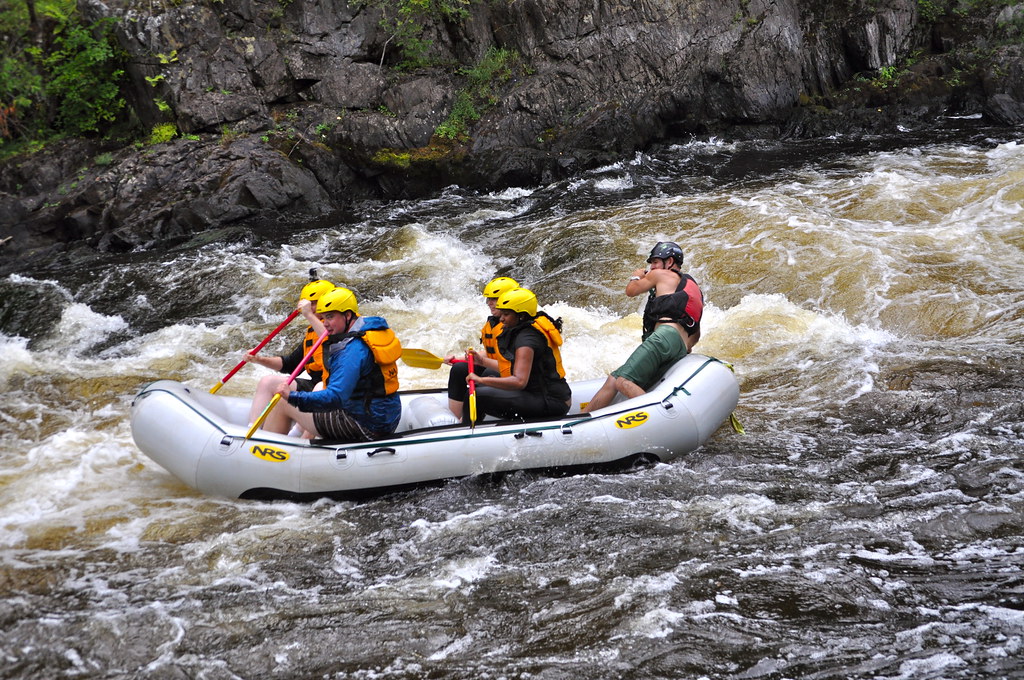
Photo By: A Healthier Michigan
There are hundreds of places in the world where you can go white water rafting, here are some of our favorites:
Colorado River, United States: White water rafting through the Grand Canyon has got to be every rafters dream, and certainly one of the best white water rafting spots in the United States. You have to join one of the commercial rafting operators, which offer one-day or multi-day rafting trips.
Noce River, Italy: The Noce River in the Val di Sole is likely one of Europe’s best white water rafting destinations. Need more inspiration? Check out this short video.
Zambezi River, Zimbabwe: In just a one day rafting trip you can do a stretch of the river that has 22 rapids and a variety of grade difficulties with the max being Grade V (remember Grade VI is considered unrunnable).
Pacuare River, Costa Rica: The Pacuare River offers a Grade III and Grade IV levels of difficulty. The benefit is that it’s relatively warm tropical water, so even if you fall in you won’t freeze. The banks are covered in lush rainforest, so it will be both a thrilling and beautiful run.
Futaleufu River, Chile: In the heart of Patagonia is the Futaleufu River whose water is fed by melting glaciers of the Andes mountains. It’s famous for its turquoise waters and for being one of the top destinations for white water rafters in the world. The rapids are ranked from Grade II to Grade V+. The upper section of the river is made of a 22 kilometer stretch that is considered very dangerous and has Grade V rapids. The middle section is good for more experienced rafters, while the bottom section is better for beginners with its Grade III rapids.
Other articles on travel destinations by the water and water sports adventure travel ideas:
Where to Scuba Dive with Big Animals
The Best Scuba Diving Specialities
How to Get Your Scuba Diving License
Where to Go Sea Kayaking this Summer
A Short History of Canoeing and Kayaking
A Short History of Deep Diving
Lovely Spots to Horse Ride on a Beach
The World’s Biggest Waterfalls
Most Adventurous Water Parks for Young and Old
Prime Wind Surfing Destinations
Beautiful and Giant Rivers to Cruise Down
In adventure travel news, n innovative new natural desert reserve spanning 10 percent of the total area of Dubai has been launched in the UAE. The Marmoon Desert Reserve Project is set to be the site of several ecotourism projects and conservation efforts contributing to the protection and nurturing of the environment,…
Hot Topics
In adventure travel news, n innovative new natural desert reserve spanning 10 percent of the total area of Dubai has been launched in the UAE. The Marmoon Desert Reserve Project is…



